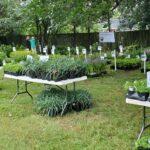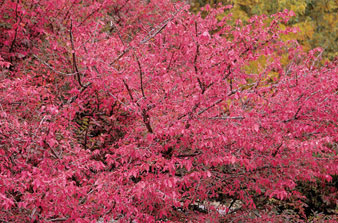
Fall Native Plant Fest and Sale
August 5, 2024
Cape Conservation Corps Fight Against Invasives
September 13, 2024Jamie Wilhelm
Jamie reached out to me through the CCC FB site asking for advice about removing a large area of invasive brush on the side of her property, essentially a wasteland. She had aspirations of turning it into a wildlife friendly area—the perfect Habitat Hero! In less then a year and half it has become a thriving ecosystem supporting the birds, bees, butterflies, and many other important critters. I asked Jamie to tell me about the process in her own words (I couldn’t have said it better myself!)
“In May of 2023 I looked at the west side of our property and decided once and for all it was time to make it usable. It was 1500 square feet of various invasive vine and grass, mostly English ivy and liriope. It was a tangled mess that was difficult to walk through or use in any way. Out of my long-lived love and appreciation for birds and wildlife, I decided I would dedicate the space in its entirety to being a beneficial native plant area for wildlife.
We started this process by having a hired individual use their skid steer to 100% dig out and clear all the vegetation manually, we did not use any chemicals at all in this process. We were then left with a very large area of dirt. I used wood chips from fallen trees to create pathways, and then I started researching native plants and how they directly help all the wildlife that I loved, especially insects and birds. With LOTS of help and advice from our very own Stacey Wildberger along the way, I slowly started obtaining native plants in any way that I could; I bought many from our community plant sales, and I also reached out to anyone in the community who was looking to thin out or dig up any of their natives to share with me for this project. While it remains a process, my family and I have been able to use this large area as a relaxing space to peruse blooms and witness insects thriving.”
When I asked her to name the environmentally friendly practices she engages the list was long:
- no chemicals are used on the property
- pine needles and leaves are left on site to overwinter
- a massive common milkweed jungle as been allowed to thrive to support monarch caterpillars
- native grasses at the edge of her property near the road to catch run-off
- maintains an ongoing woodpile habitat for critters to use for shelter
- most of the grass has been eliminated and what little there is doesn’t have chemicals applied
- mowed with a push mower to decrease both gas and noise pollution
- an edible herb garden is shared with insects
- water source is provided for birds and insects during rainless periods
In addition to herself creating a safe place for wildlife and being a Habitat Hero she has inspired many of her close friends to adopt native plant gardening and have shared my plants with them for their properties. But the most important thing to have come out her devotion to creating a health ecosystem has been actively involving her two daughters with learning about native plants and their purpose by bringing them to volunteer for CCC weed warriors, allowing them to shop with her at the plant sales, and utilizing their help with weeding invasives. At age 3 and 5 they can both identify many invasive species and are quick to pick them! Jamie is creating the next generation of Habitat Heroes and installing in her children a love and respect for the natural world. Thank you, Jamie, for being an inspirational Habitat Hero! Check out these amazing before and after photos.
Before


During


After (also see top photo)






